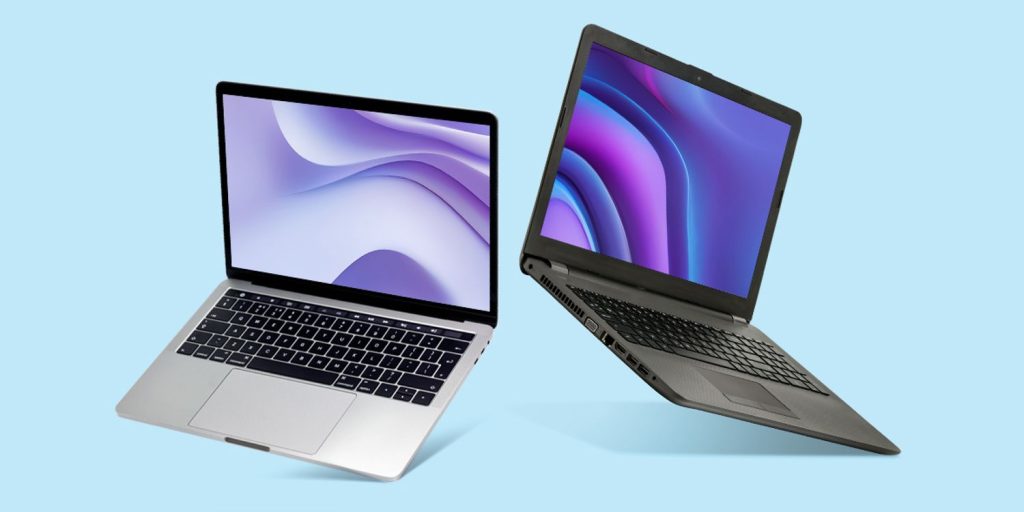Intro

In today’s fast-paced digital landscape, laptops have become an essential part of our personal and professional lives. Whether you’re a student, a remote worker, or simply someone who values mobility, it’s important to understand the ins and outs of these portable powerhouses. In this comprehensive blog post, we’ll dive into the world of laptops, explore their key features, the differences between laptops and desktops, and the factors to consider when shopping for your next laptop.
What is a laptop?
A laptop, also known as a notebook computer, is a personal computing device that combines the functionality of a desktop computer into a compact, portable package. Unlike their stationary counterparts, laptops are designed for use on the go, with a built-in display, keyboard, and touchpad (or trackpad) all contained in a single, self-contained unit.
A defining characteristic of laptops is their ability to run desktop operating systems such as Windows or macOS, rather than mobile operating systems such as iOS or Android. This distinction is important, as it allows laptops to handle the same types of files and applications as their desktop counterparts, ensuring a familiar and versatile computing experience.
What is the difference?
The primary difference between laptops and desktops lies in their portability and design. Desktops are typically larger, more powerful, and designed for stationary use, with separate components such as a computer case, monitor, keyboard, and mouse. Laptops, on the other hand, are compact, self-contained units that prioritize mobility, allowing users to work and access their digital content from virtually anywhere.
One of the main advantages of laptops is their battery-powered operation, which enables users to work without being connected to a power source. This portability is a game-changer, especially for individuals who need to be productive on the go, such as students, remote workers, or frequent travelers.
Touchpad
Since laptops have ditched the traditional mouse, they rely on a touch-sensitive input device called a touchpad (or trackpad) to control the on-screen cursor. This integrated pointing mechanism allows users to navigate and interact with their laptop’s interface simply by moving their finger in a specific location.
Touchpads come in a variety of sizes, with some laptops, such as the MacBook Pro, having wider touchpad surfaces that provide a more comfortable and responsive experience. Other laptops, such as the Microsoft Surface Pro, have smaller touchpads that may require more precise finger movements. Regardless of size, the touchpad functionality remains consistent, enabling users to click, scroll, and perform various gestures to control their laptop’s interface.
Battery
One of the defining features of a laptop is its built-in battery, which allows for tethered use away from a power outlet. This battery-powered operation is a key aspect of laptop portability, enabling users to work, browse the web, or stream content without being confined to a specific location.
However, it is important to note that laptop battery life can vary significantly, depending on factors such as the device’s power consumption, the tasks being performed, and the overall capacity of the battery. Laptops that are used for resource-intensive activities, such as gaming or video editing, typically have a shorter battery life than those used for basic tasks such as web browsing or writing documents.
Ports
Laptops are equipped with a variety of ports that allow users to connect external devices such as mice, keyboards, external displays, and storage drives. These ports are essential for expanding the functionality of the laptop and enabling seamless integration with other peripherals.
While larger, more powerful laptops often boast a wide array of ports, including USB, HDMI, and VGA connectors, the selection on some ultraportable and compact laptops can be more limited. For example, the Microsoft Surface Pro has fewer ports than a traditional laptop, with only one USB port and a proprietary power connector. In contrast, the MacBook Pro offers only two USB-C ports, requiring users to rely on adapters or dongles to connect legacy devices.
Price
There is a notable difference when it comes to the price of laptops compared to desktop computers. Laptops, in general, are more expensive than their desktop counterparts with similar features. This is primarily due to the additional engineering and design required to pack all the necessary components into a compact, portable form factor.
The price range for laptops can vary significantly, with entry-level models starting at around $400 and high-end, premium laptops costing over $2,000. Factors such as the processor, RAM, storage capacity, display quality, and brand can all contribute to the overall cost of a laptop. Additionally, specialized laptops, such as gaming rigs or professional


